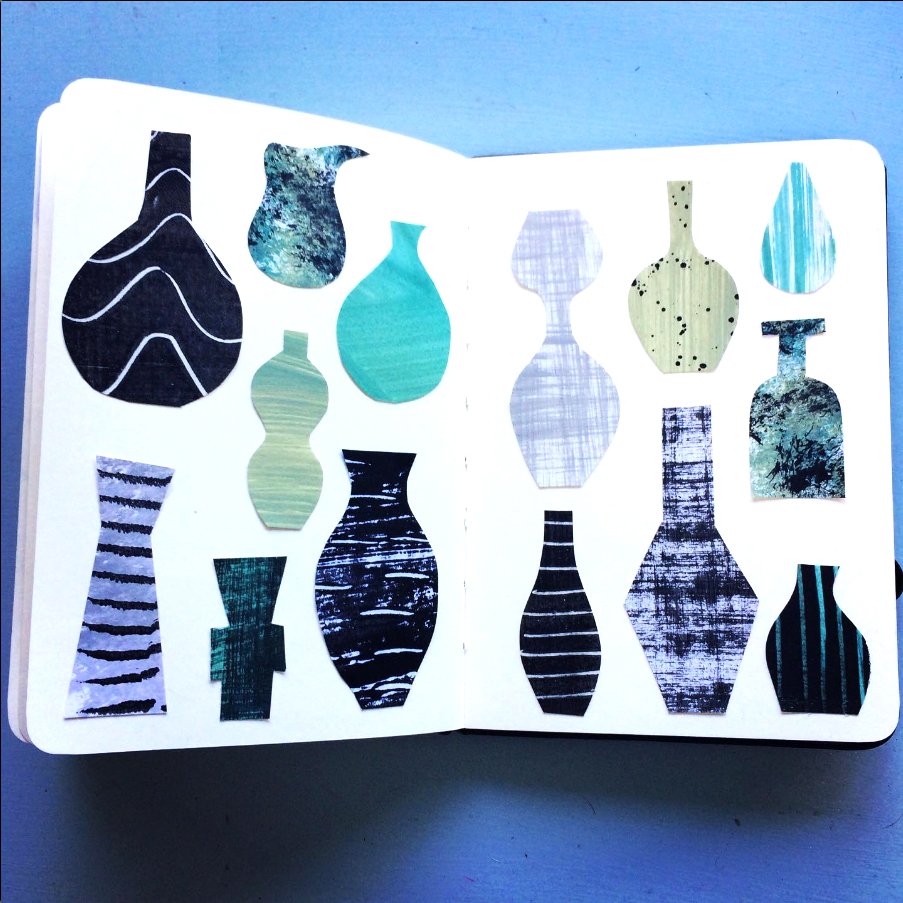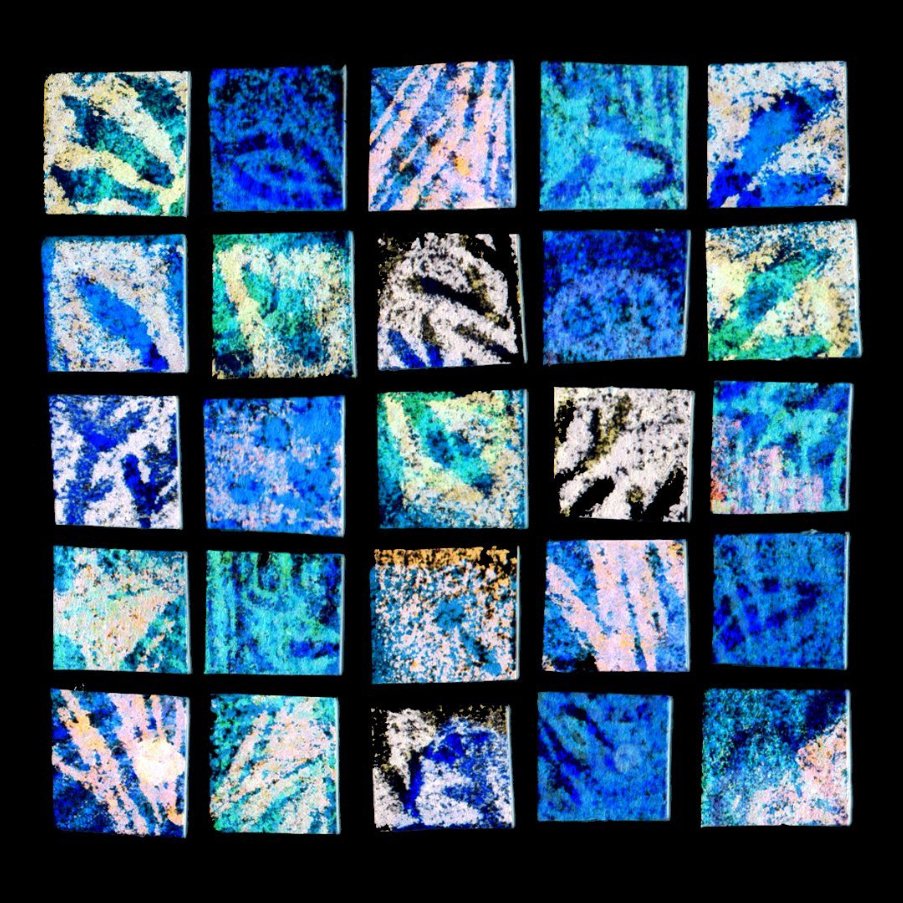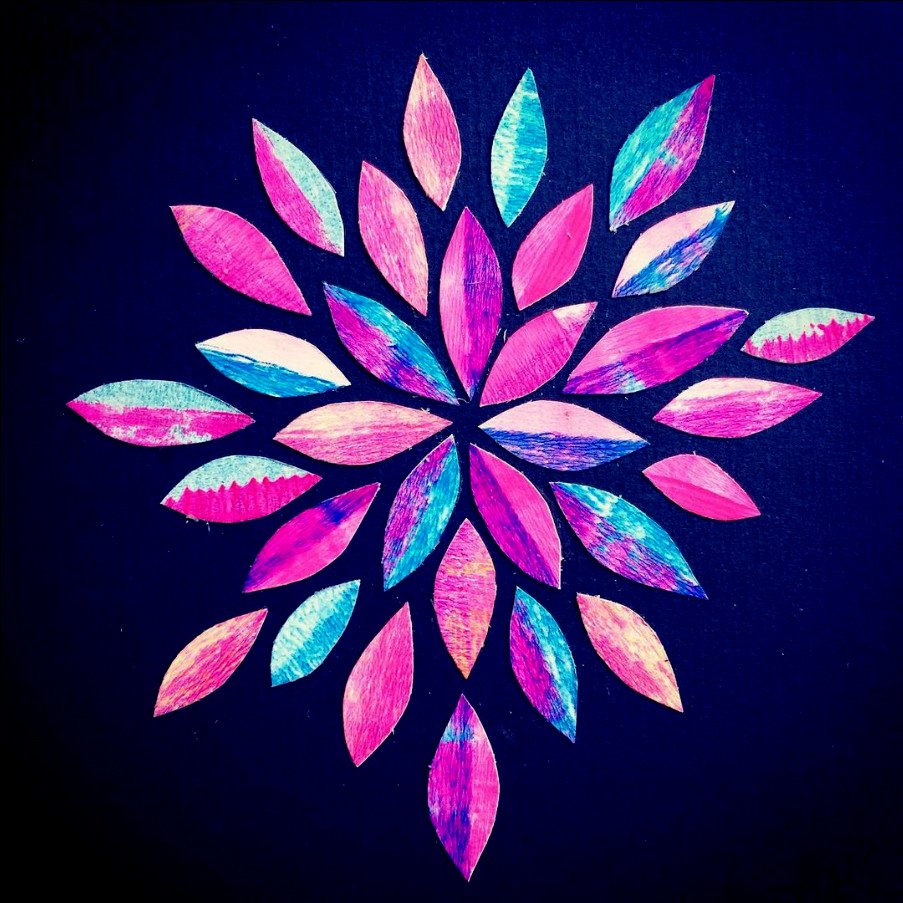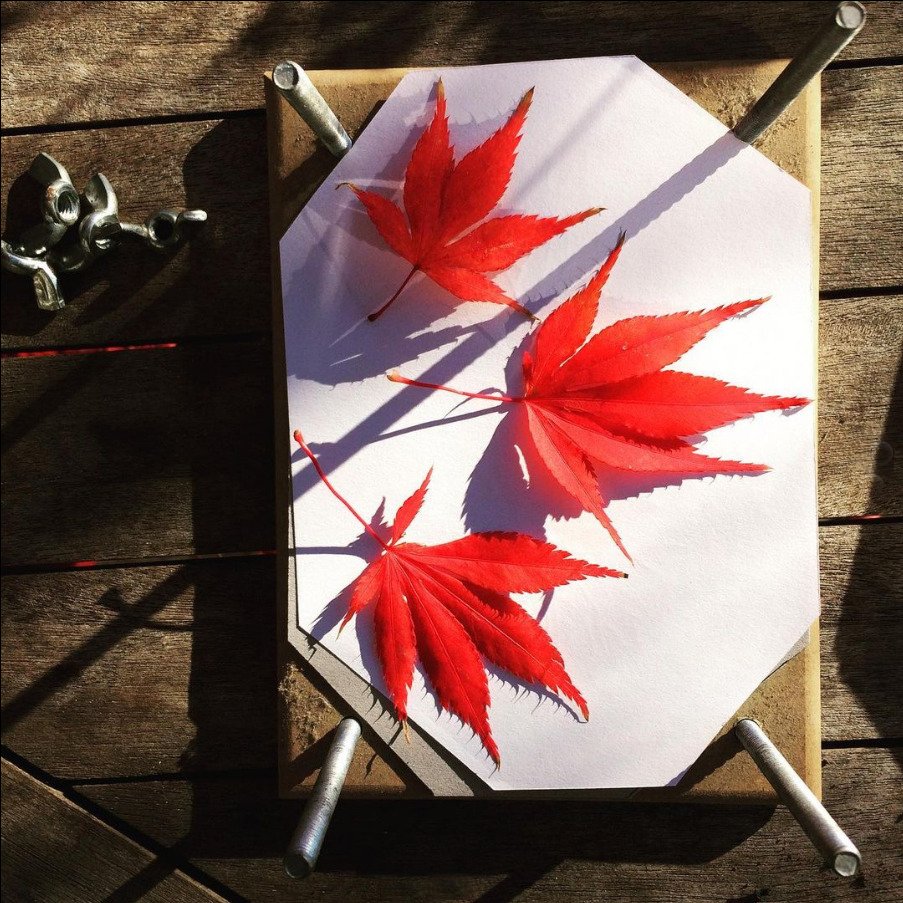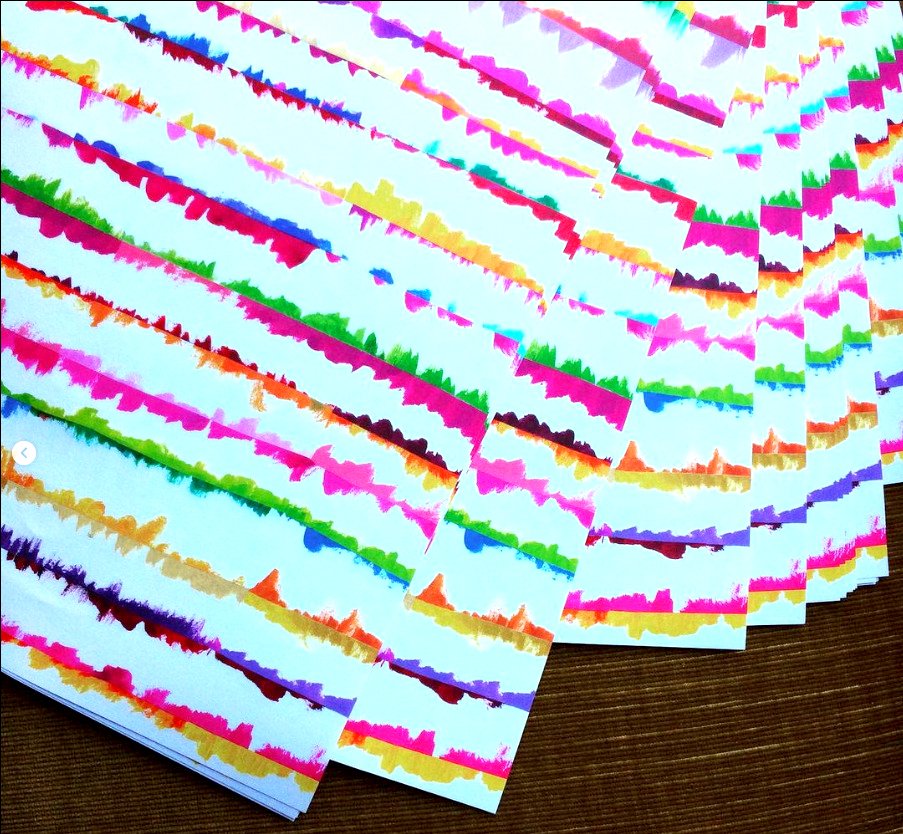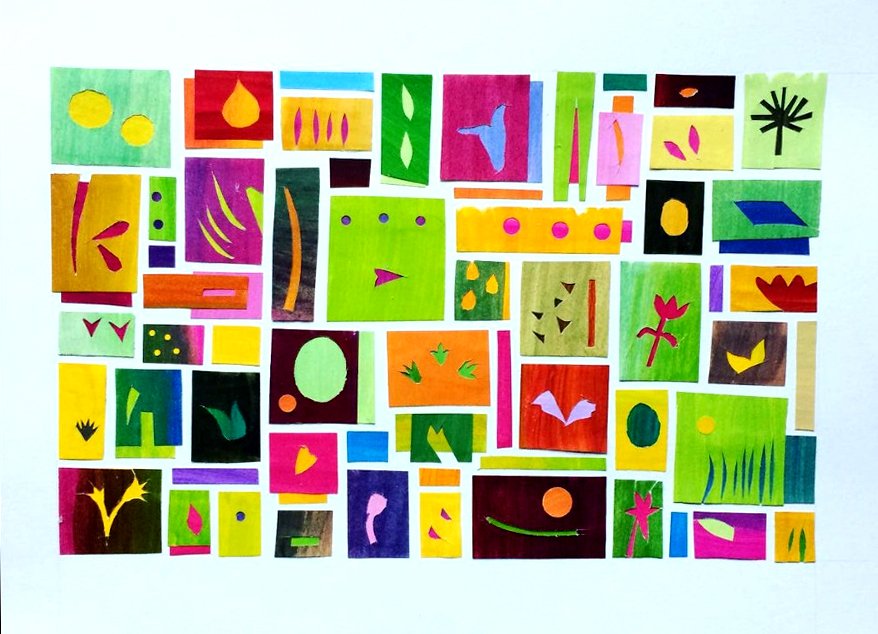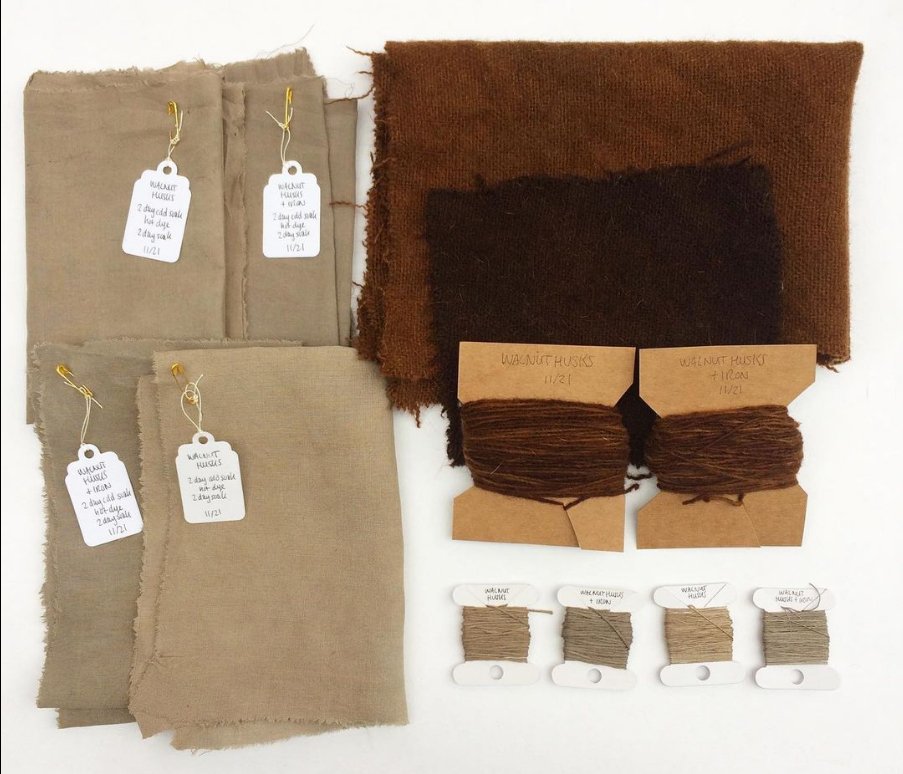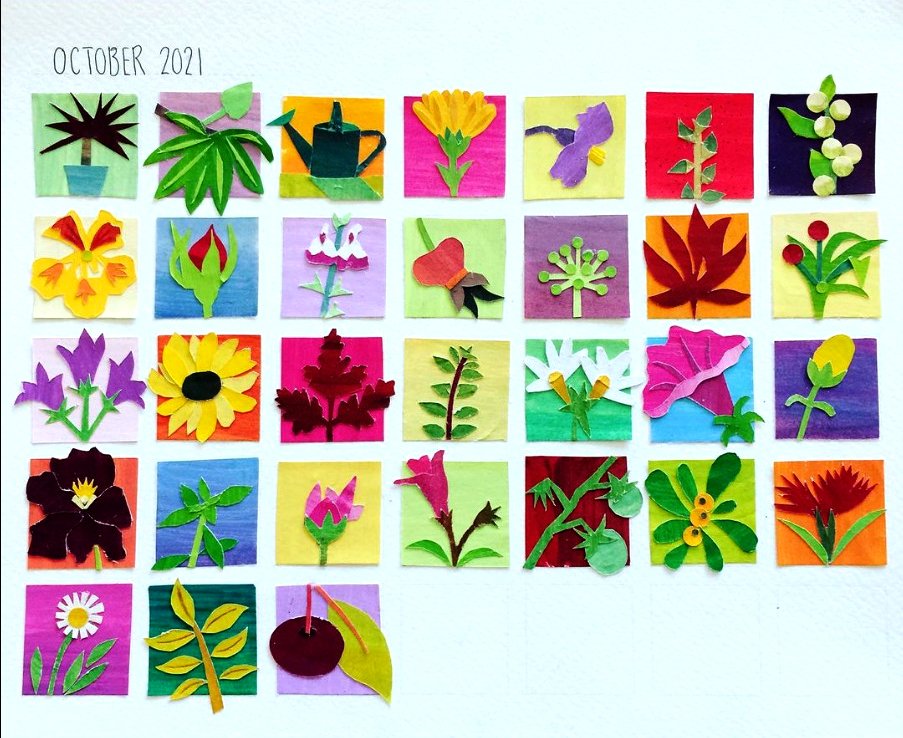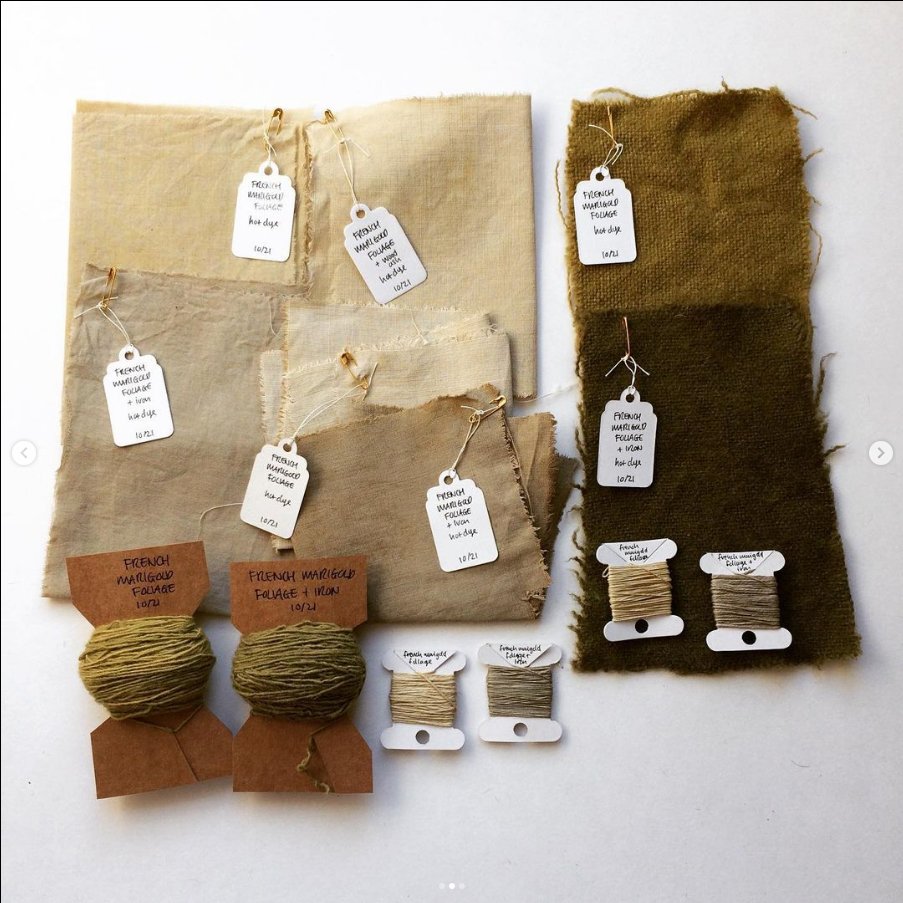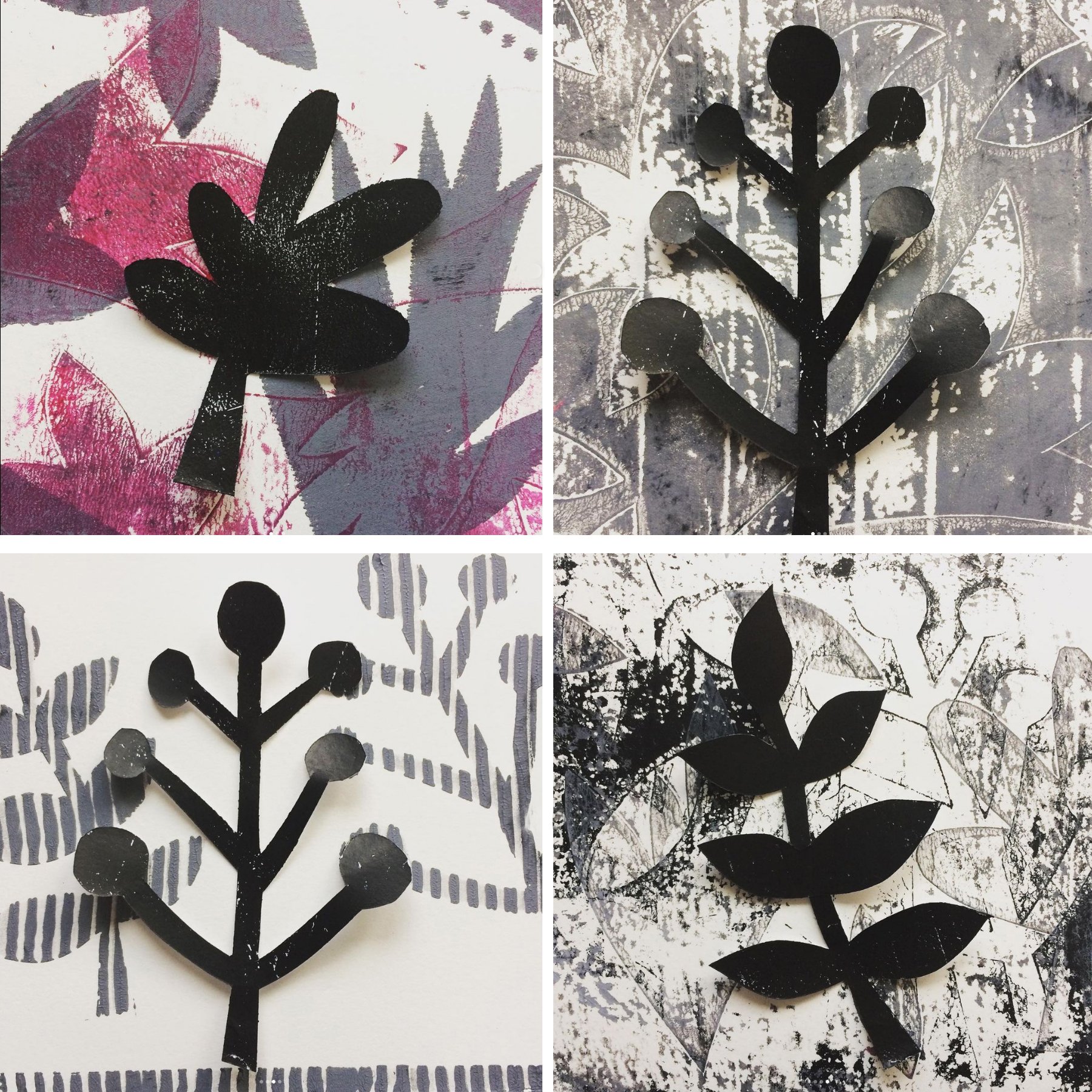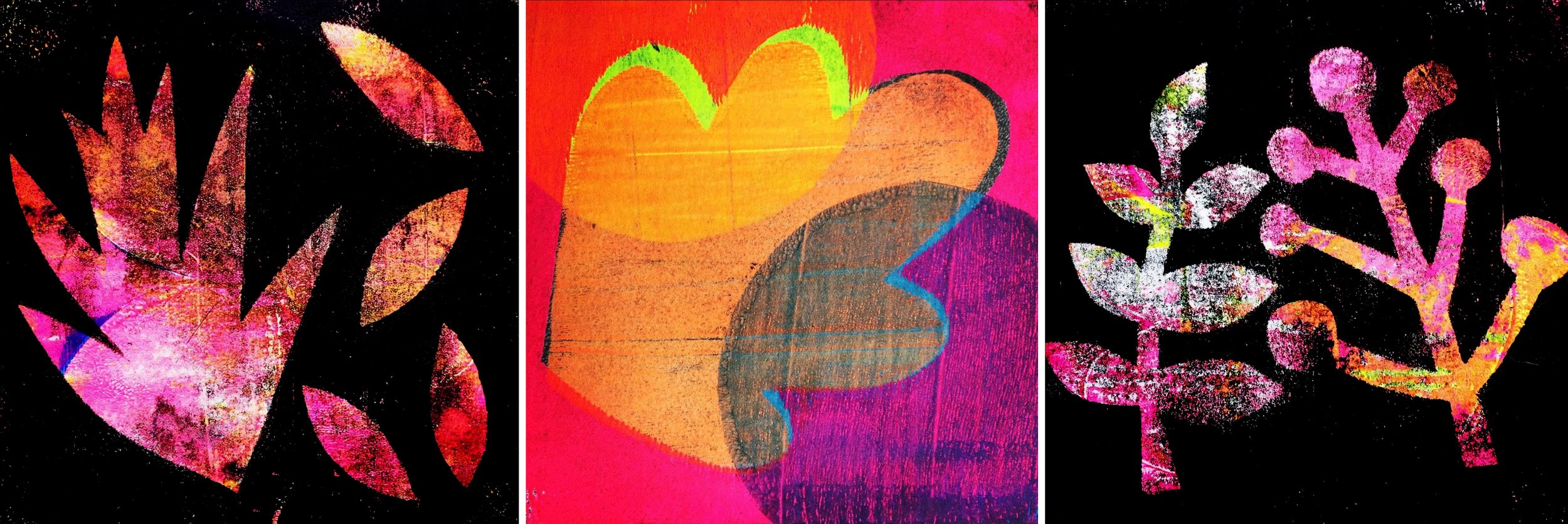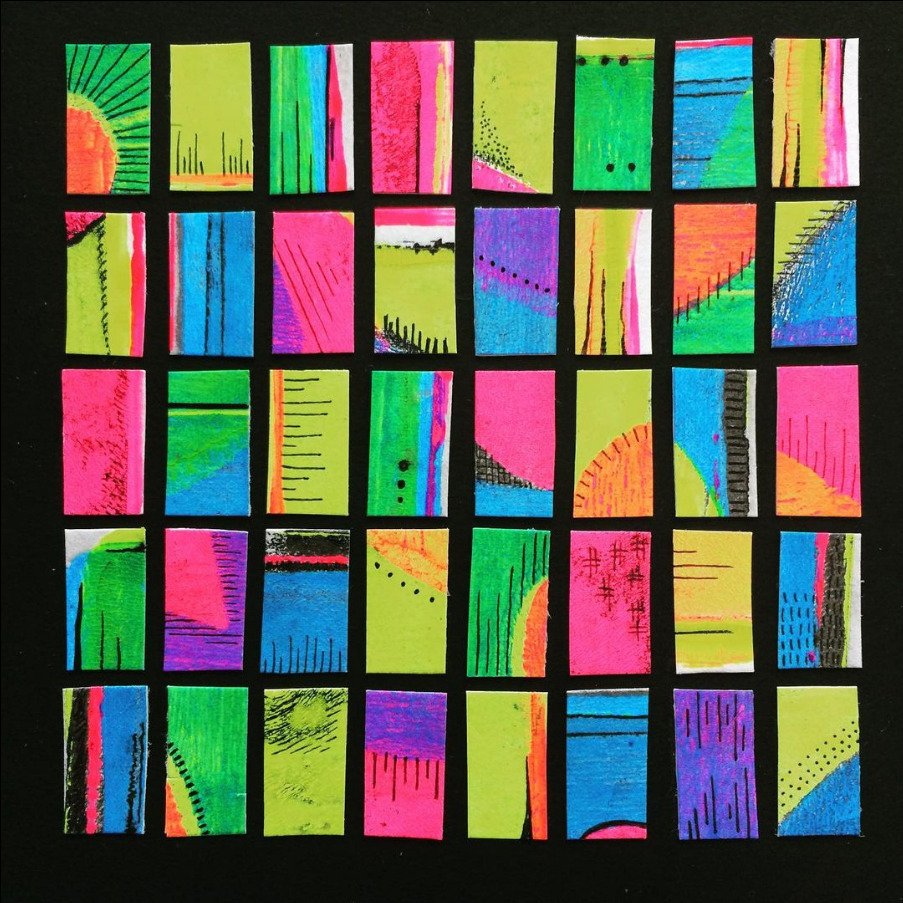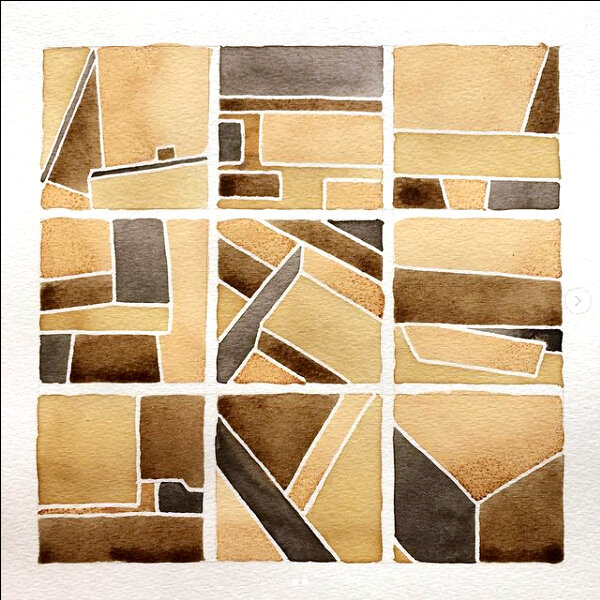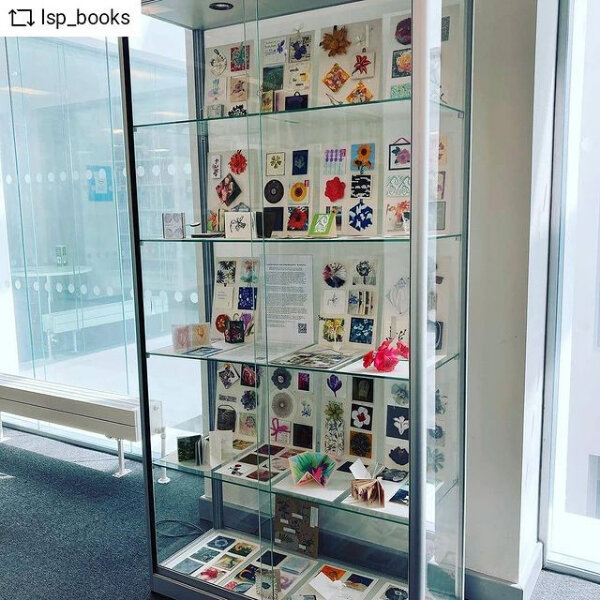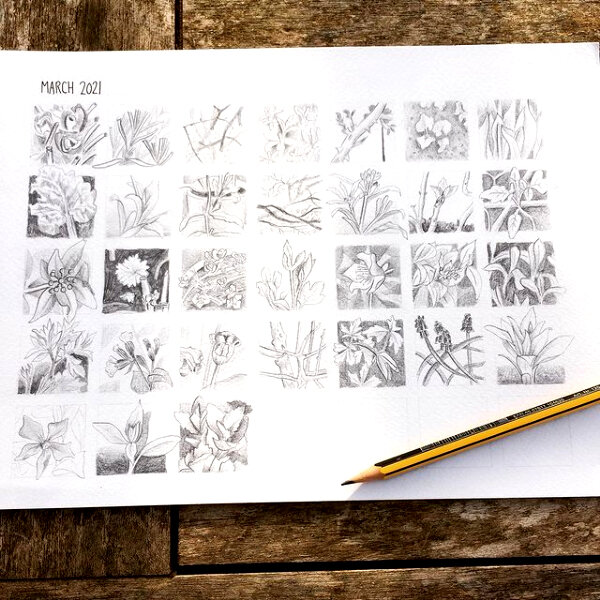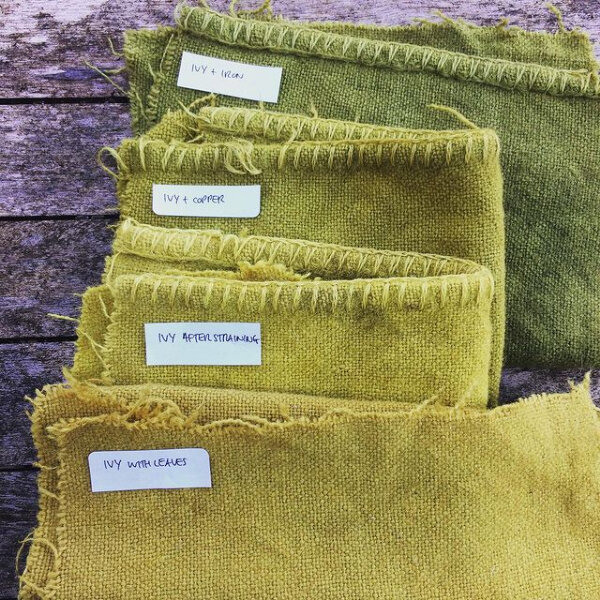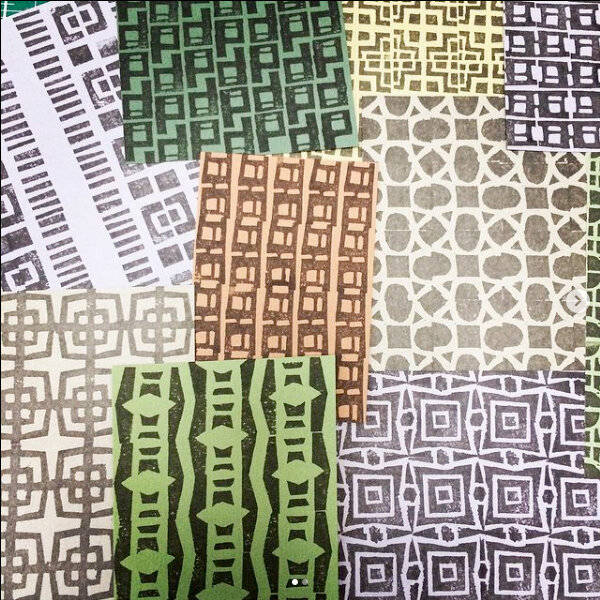Having fun stitching into circles punched out of my colour palette sheet for my daily drawings… as always, I’m baffled by my preference for working with the bits headed for the bin. I think it’s the random nature of the mark making and the transformation that comes from using punched shapes that is so appealing. Decisions taken out of my hands – the opposite of the control of my work as a graphic designer!
ABC collage session
Really great online collage session in mid-February led by @catherine_cartright_artist for ABC. Catherine put together packs of papers for everyone, and we all snipped and glued away, making collages on the theme of ‘pairs’. Very interesting to hear how she uses collage in her work with trauma-based community groups. On a much less meaningful level, I made a small book of funny faces. What I love so much about collage is not having a plan, so the end result is always a surprise. Many thanks Catherine for an excellent way to spend 45 minutes on a Wednesday evening.
Kate Semple workshop
The original collage created in the online workshop
Mid-century vessels
Collage of leftovers
In mid-June I took part in an online workshop with Kate Semple, organised by STILL Flower Drawing. It was a wonderful hour of creative messiness. We made patterned papers to create a still life collage of vases. I loved working at a fast speed - it stopped me over-thinking things, and the final collage has a more spontaneous feel as a result. As always with collage, I’m more interested in the bits that are left behind afterwards, so have gone on to create some more smaller collages in my sketchbook.
Week 3 – collages
Using an ink drawing as inspiration for a collage of coloured book pages
A rhododendron flower – look like it could work well as a rubber stamp
A ripped sugar paper collage, and a coloured pencil drawing of the collage
A collage of young sedum leaves (using random papers from my box of paper scraps)…. and a wax crayon rubbing of the collage
Phlox flower – two collages using leftover gouache strips from last October’s daily drawings
A week of daily collages – one of my favourite ways of working as I never know what I’m going to end up with when I sit down with a blank page. Always a nice surprise!
Leftover stencils
Playing around with some leftover tracing paper stencils that have been coloured with ink stamp pads. I think I’m going to use this as a starting point for an embroidery. I like how it looks when inversed in Photoshop too...
Week fifty two
And so ends the Garden Residency 2021!
One final collage of offcuts for the year
My small article in the latest issue of Printmaking Today
Penultimate dye experiment of the year – Yarrow (achillea)
December’s daily drawings - back-drawn monoprints with natural ink
And so ends my 2021 Garden Residency... it’s been a diversion, an excuse to experiment, some much needed structure, and license to play. A creative sabbatical. Accompanied throughout by my trusty studio assistant, Otto (a Vizsla of senior years).
One final collage of monoprinting offcuts before the year came to a close. If in doubt, cut out circles and arrange them in a grid. Always a useful creative un-blocker.
My last two dye experiments of the year are out of the dyepot... that makes 55 in total. Shown here is Yarrow (achillea) and I have Teasel drying at the moment. To be honest the colour palettes are very similar. A rather unexceptional end to a year of colour creation, but I’m looking forward to using some of the dyed fabric, yarn and thread from my dye experiments in new work next year.
In a piece of perfect timing, I received some exciting post on the penultimate day of this year-long project. I’m thrilled to bits to have a small piece on my garden residency in the latest Printmaking Today magazine. Many thanks to editor Leonie Bradley for including me in this issue.
My final month of daily drawings... 31 days of (rather splodgy) back-drawn monoprints coloured with natural ink (mostly marigold, black dahlia and oak twigs). As with all of the other eleven sheets, it’s interesting to see the overall effect as they accumulate through the month, rather than focusing on one drawing in particular.
I’m pleased to have completed my year-long challenge of a drawing a day, and I think I may have unintentionally made it into a habit (although I may reduce it to just weekdays as this is easier to build into my work schedule). Here’s to more drawing in 2022!
Amongst many other things, this Garden Residency has been a useful exercise in maintaining a weekly blog entry – based on my many Instagram posts throughout the year. I’ve really appreciated all the words of support, encouragement and feedback – it’s been a good way of feeling more connected during an otherwise isolated year.
I now need to finish recording my work in my journal, and take some time to consolidate and reflect, before working out my next steps. In the meantime, wishing everyone a happy and healthy new year... x
Week forty nine
Paper stencils from November’s polyprints
Collage of chopped up test sheets from polyprints
Another polyprint test sheet collage
And an inverse image in Photoshop
Dye results from iris tubers
I kept the paper stencils cut for November’s polyprints. I really like the chunky quality of the shapes and would like to use this as a starting point for new work. Maybe a woodcut? Or an embroidery? Or even another collage?
Using up more waste material… I chopped up the test sheets from last month’s polyprints... interesting colour combinations and texture. I inversed one of the scans in Photoshop and I was fascinated by how different it looks when the colour palette is altered.
I’d read that dye could be made from iris root (tubers)... I was moving some irises from the front garden, so decided to test it out. Not quite the colour punch I was hoping for, but some pleasant-enough teddy bear browns in the yarn and woollen blanket (looks a bit more ochre in this photo than it does in real life).
Week forty eight
Polyprinted daily drawings for November
Random print with leftover, used polyprint plates
Collage made from filter paper from making black dahlia ink
November’s sheet of daily drawings are now complete – this month I made polyprints (using plates similar to frozen pizza base packaging). I have a lot less control and the results are a lot more rough and ready than I’m used to, but I’ve really enjoyed the challenge of working out the potential of this ultra low tech form of printmaking.
I used the leftover, used polyprint plates to make a random grid print of overlays – interesting to see the unexpected textures that emerge from working like this. I’d definitely like to experiment more with polyprints in the future.
The coffee filter paper used for making my black dahlia ink a ouple of weeks ago was too enticing to throw away. Instead I made a small collage of a dahlia, with the background painted with the actual black dahlia ink.
Week forty seven
Hapazome print of nasturtium leaves
Hapazome print of acer leaves
Recent natural ink results
Offcuts collage
And another offcuts collage
I tried a few more focused experiments with hapazome printing (hammering leaves onto fabric to create a print). As the frosts polished off both the nasturtiums and acer leaves, I caught them just in time. The ochre fabric used for some of the acer prints was dyed with acer leaves from the same tree this time last year. I’m amazed at the detail of the leaf veins from the nasturtium leaves, and also surprised at the intensity of colour. It will be interesting to see how long it lasts.
As the colour rapidly disappears from the garden at this time of year, the appeal of making ink returns. Something very satisfying about bottling colour. There’s been a good colour range with my recent batches of ink… the black dahlia is particularly intense (and works better as an ink than as a dye). The French marigold is my favourite as it’s unusual to get a colour that is so definitively yellow (and not a shade of brown!)
Finally this week, I’ve been cutting up sheets of paper used for cleaning my rollers after recent monoprinting sessions. It’s my usual approach of rescuing paper before it gets to the recycling bin – always a joy to see random patterns and mark making emerging without thinking too hard about the end result.
Week forty six
Pressing acer leaves to preserve some of the colour
First attempt at hapazome printing
Another offcuts collage
A batch of printed wrapping paper
Black dahlia flowers – dye results
Trying to capture some of the amazing autumn colour outside my back door by pressing acer leaves (already hardly any left on the tree by the time I type this).
I made a first attempt at hapazome - the Japanese technique of creating prints from plant material by hammering with a mallet. Not overly successful – there was a lot of squashy splodges not shown here – but I could identify what has potential… hydrangea petals and leaves of acer, herb Robert and nasturtium...
Couldn’t quite bin what was left of the brush cleanig gouache strips, so I made another collage of the tiny offcuts (getting smaller!) I also received some wrapping paper back from the printers featuring a repeat pattern of my original collage of offcuts. Lovely job by printed.com
I grew dahlias for the first time this year... lost a few early on to ravenous molluscs, but the gorgeous black blooms made an appearance in July and have only just stopped flowering last week. I’ve been saving deadheaded flowers in the freezer and made this dye batch with them last week. A strong range of browns. Next year I’ll freeze them in an airtight container though... the musty smell taints ice - not a welcome addition to my G&T!
Week forty five
Initial collage play
A garden collage - leftovers of leftovers
Results of dyeing with walnut husks
Walnut husks soaking in boiling water prior to making a dye bath
It seemed a shame to throw away the offcuts from the gouache brush cleaning strips used for last month’s daily collages, so I started playing around with them. Leftovers of leftovers. The final collage I made felt like a small paper jigsaw. I really like the random shapes and incidental colour combinations that come from working like this.
I finally got the chance to dye with walnut husks after spotting a tree on my morning dog walk. A really impressive depth of colour on the yarn and woollen blanket, although hardly any shift in colour at all with iron oxide. The colour started coming out of the husks the moment they were covered with boiling water. You definitely need to wear gloves with this dye bath, or you’ll end up with yellow smoker’s fingers (speaking from experience). Looking forward to making ink with what’s left of the dye...
Week forty four
October’s ‘daily drawings’ - collage
Dye results with French Marigold flowerheads
Dye results with French Marigold foliage
French Marigold ink
October’s daily drawing challenge - 31 days of collage. The collage material was the cut-up sheets of paper I cleaned my brushes on for last month’s gouache daily drawings. So a similar colour palette, but they feel quite different. This month was definitely the most fun so far this year.
French marigolds - an astonishing amount of colour extraction. This shows the results of hot and cold dye baths of the flower heads, and then also the foliage, which I boiled up separately (lovely smell). Big thanks to my very kind neighbour Norman who donated these magic plants for dye experimentation.
I also made a tiny batch of French Marigold ink – bottled sunshine as the winter nights draw in!
Week forty three
I made some simple paper stencils based on ink drawings of plants in my garden, and dusted off my gelli plate to make some monoprints. Much as I love the natural colour palettes I’ve been creating this year, I still can’t resist my tubes of fluorescent acrylics! I also made some others with a calmer colour palette that sit quite well with some of the used paper stencils.
After chopping up some of the gelli prints that didn’t go so well for collages, I was still left with tiny offcuts which I made into another collage. I always enjoy using up paper that was otherwise headed for the bin.
It’s been a week of play (slightly less busy with work as it’s half term and lots of my clients are on holiday). I carved some rubber stamps based on a collage I made of a cordyline in a pot as part of October’s daily drawings. l love the quick way you can try out different colour combinations with stamps, and also build up layers of colour and texture.
Week forty two
A bramble colour palette
Bramble leaves dye results
Bramble stems dye results
Pot Marigold flower dye results
Early morning shadows on the ‘daily drawing’ collages
A week of dye results…
First up is a comparison of yarn dyed with bramble – on the left are yarns dyed with brown stems in February; in the middle are yarns dyed with mostly green stems this month; and on the right are yarns dyed with bramble leaves, also this month. The differences are surprising all from the same plant in the garden. I like how they form a very harmonious colour palette.
The latest bramble dye results in full show a comparison between the leaves and the stems. A bit more subtle than the differences with the yarn, but still a useful lesson in the importance of separating a plant into different dye pots.
More dye results from pot marigolds, grown from seed this year. The flowers were dead-headed and collected in the freezer over a number of months. They were mixed colours so perhaps the results were not as strong as they would have been with French marigolds. A good buttery range all the same.
Finally, my ‘daily drawing’ this month has been collage (using the sheets of gouache colour from cleaning my brushes for last month’s daily drawing). Dramatic shadows from the early morning sunshine in my studio make them look a lot more 3-dimensional.
Week thirty seven
I made a tiny snake book of roses, made from an insert from a David Austin catalogue (rescued from the recycling bin). The grid of photos was printed on both sides of the paper, so it opens in both directions.
I needed assistance with labelling my latest dye experiment. It’s an unusual mix of colours - pinky brown and grey on cotton and linen; ochre and very dark green on wool and silk. I thought the plant in question was called Toadflax, but after some light googling to check this, I realised I’ve been using the wrong name. Thanks to the expertise of some of my followers on Instagram, I now know that this needs to be labelled ‘Yellow Loosestrife’.
Finally this week, I made another collage with offcuts from the rubber stamp test sheet from last month’s daily drawings. It reminded me of watercolour, so I reproduced it in paint. Not that excited by the end result, but I really enjoyed the process. Bespoke colouring-in... an exercise in slowing down and not thinking too hard about what you’re creating.
Week thirty six
Collage with posca pen, using discarded sheets from backdrawn monoprints
Collage of circles cut from rubber stamp test sheet from last month’s daily drawings
A supermodel dahlia from the garden
A week of working with leftovers. I made a couple of collages – one using the discarded sheets from the backdrawn monoprints I made a few weeks ago, and the other was cut from the test sheet I used for my rubber stamp daily drawings from last month. Saving things from the bin seems to be a recurring them this year! I think both collages have potential to be developed further… the monoprint collage could be turned into a relief print, and the stamp collage could be made into a set of badges.
I’ve had mixed success growing dahlias for the first time this year. In an ongoing battle with the slugs I thought it was only the black ones (dahlias not slugs!) that had prevailed. But one plucky fellow has beaten the onslaught of the molluscs. It’s an absolute marvel and looks like a 1950’s swimming hat. It has strengthened my resolve to try again next year. In the meantime, I’m deadheading the black dahlias and freezing them for the dyepot...
Week sixteen
Natural ink drawing, based on photos taken in my garden (see below)
Black hellebore flowers make a lovely green dye and ink
Planning out an embroidery based on a collage of natural ink splodges
Drawing seedlings
My World Book Night 2021 entry to the Herbarium
The Herbarium on display in Bower Ashton library (photo ©Linda Parr)
Working with grids (again!) this week. I took some photos of different shapes in the garden – mostly steps and decking – and traced these off to make a masked drawing with natural ink. The ink used was rhubarb root, bramble and acorn gall (with and without iron). This feels like a starting point rather than a finished piece, so I’m looking forward to developing this further.
I dyed with black hellebore flowers… only a small batch but enough to see that it gave the best green I’ve managed to achieve yet. It also boils down to a good ink.
I re-visited a collage made a couple of weeks back from my ink sample sheets – I isolated a section of this and have traced it off to make a small embroidery. Quite pleasing to see that a similar palette could be chosen with the naturally dyed threads. I think this will work well on linen.
In between tending to my seedlings (currently taking over the spare room, cold frame and greenhouse) I’m enjoying drawing them in a tiny coptic-bound sketchbook given to me by Eva Hejdström.
Finally, Friday was World Book Night and it was a pleasure to take part again in the annual call for entries to mark the occasion. This year a Herbarium has been created – an exhibition of literary-inspired flower illustrations in Bower Ashton library. My illustration of periwinkles was inspired by a poem called ‘A Tale’ by Edward Thomas. These flowers are my nemesis in my garden… it’s an ongoing battle to stop them swamping everything, so it was good to pause and appreciate the beautiful flowers before I start yanking them up all over again! A pdf catalogue of the Herbarium can be downloaded here. Many thanks to Sarah Bodman and Linda Parr for organising this wonderful collaboration.
Week fifteen
Plasticine prints of the bottoms of flowerpots
The pots in question
Collage of dragon leaf fern prints (with ink made from rhubarb root)
paper weaving with natural ink sample offcuts
A short film I made about my concertina books for BABE 2021
A rather less productive week as I’ve been pitched back into catching up with work. The week ended with BABE 2021 – The Lost Weekend…. an online celebration of artist’s books to replace the usual amazing event in Bristol that was due to be held this year. Not the same as a real life book fair, but a wonderful chance to take part in some collaborative projects and to watch short films made by lots of other book artists (still available to watch here). I made one about five of my concertina books – illustrating the versatility of my very favourite book format, and showing some of my processes and inspirations – you can view it here).
One of the collaborative challenges set for BABE 2021 was to photograph or trace the backs of things… I made some plasticine prints of the bottoms of flowerpots from my shed. I really liked the bold patterns, and plan to carve some rubber stamps based on these prints. I also printed the backs of some dragon leaf ferns - less successful as a print, so I cut it up and made a grid collage using masking fluid and rhubarb root ink. It starts to look like tiger fur!
Finally, some simple paper weaving using more offcuts of my natural ink samples – I’m interested to see the crossover between paper and textile work that’s evolving as part of this ‘garden residency’.
Week thirteen
My ‘redesign a rainbow’ submission for BABE2021
My sheet of natural ink samples is filling up (with a lot of yellows and browns)…
Practising making cordage from brown paper packaging
Playing around with my garden map pattern stamps in colour
My completed sheet of daily drawings from March
A bit of a rounding up week at the end of the month. I was quite relieved to complete my daily drawings… turns out the tonal pencil sketches are a little out of my comfort zone. It was good to challenge myself though, and a perfect month for slowing down and really looking at all the changes in the garden - a transformation from the start of the month to the end in terms of plant growth. I had a bit of a play with the garden map pattern rubber stamps I made - introducing colour overlays, which gives them a bit more potential interest. This definitely needs further investigation. I continued making cordage from brown paper packaging (during Zoom meetings, off-camera!) and seem to be slowly getting the hang of it through repetition. My ink sample sheet is filling up, but I’ve realised how very many yellows and browns I’ve been creating. Finally, I submitted a collage of ink sample off-cuts for the call-out for BABE2021 to #redesignarainbow set by Angie Butler… not quite a rainbow but certainly a spectrum of natural colour.
Week eleven
Collages made from homemade ink sample sheet – embellished with catkin ink
Map-like collage with tiny offcuts from ink sample sheet
Different greens extracted from ivy dye
Pattern overload – based on shapes from my garden map drawings
Crocosmia and Nicotiana seeds arrived from Scotland… so pleased to be part of this Seed Library project (See @Plot_55b on Instagram for more information)
A quieter week on the Garden Residency for a couple of reasons… I’m very busy with work, but also as the weather warms up and it’s been dry, a lot of my spare time has been spent either sowing seeds or preparing the garden for a new season of growing things. I need to work out how to carve out a bit more time for creating artwork too. A flurry of stamp carving pattern making based on shapes from my garden maps (using Repper software to isolate the tile shapes before carving). Some work better than others, but there are a few options worth pursuing here. Following on from my ivy dyeing experiments, I dyed larger pieces of woollen blanket to see what different greens I could get with different variables. I chopped up a piece of paper I’ve been using to test samples of homemade ink - some circular, and some made from tinier offcuts (which end up looking rather like a map). Lovely to receive some seeds from The Seed Project run by Susie Wilson and Felicity Bristow up in Scotland… I’m looking forward to growing some nicotiana and crocosmia this year.





